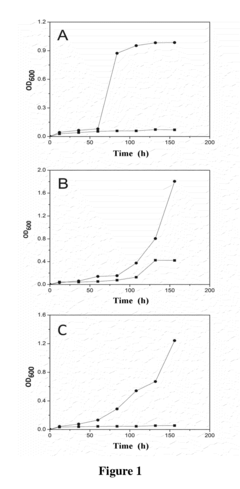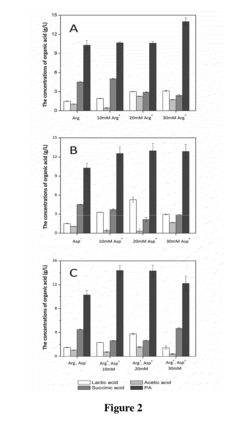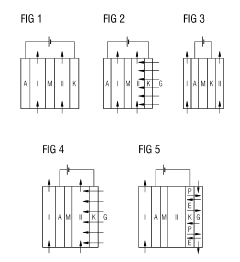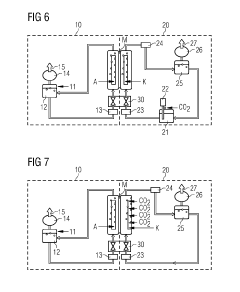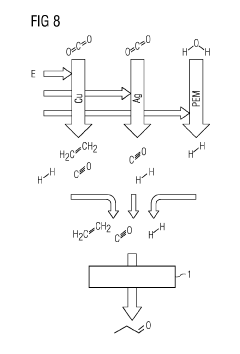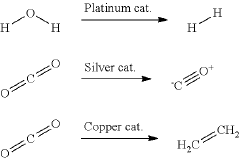Propionic Acid and Its Future in Greenhouse Gas Reduction Efforts
JUL 3, 20259 MIN READ
Generate Your Research Report Instantly with AI Agent
Patsnap Eureka helps you evaluate technical feasibility & market potential.
Propionic Acid GHG Reduction Background
Propionic acid, a short-chain fatty acid, has emerged as a promising candidate in the global effort to reduce greenhouse gas (GHG) emissions. This compound, naturally produced by certain bacteria in the digestive systems of ruminants, has garnered significant attention due to its potential to mitigate methane emissions from livestock, particularly cattle.
The interest in propionic acid as a GHG reduction tool stems from its ability to alter rumen fermentation processes. When introduced into the diet of ruminants, propionic acid can shift the microbial population in the rumen, favoring propionate-producing bacteria over those that produce methane. This metabolic shift results in a more efficient conversion of feed energy into animal products, while simultaneously reducing the amount of methane released into the atmosphere.
Historically, efforts to reduce GHG emissions from agriculture have focused on various strategies, including improved livestock management, enhanced feed efficiency, and the use of feed additives. Propionic acid represents a novel approach within this context, offering a potentially scalable solution to one of the most challenging aspects of agricultural emissions.
The global livestock sector contributes significantly to anthropogenic GHG emissions, with enteric fermentation in ruminants being a major source of methane. As countries worldwide strive to meet their climate commitments under the Paris Agreement, finding effective ways to reduce these emissions has become increasingly urgent. Propionic acid's role in this effort aligns with the broader push for sustainable agriculture and the development of innovative climate mitigation technologies.
Research into propionic acid's GHG reduction capabilities has intensified in recent years, driven by a combination of environmental concerns and the search for cost-effective solutions in animal agriculture. Initial studies have shown promising results, with some trials reporting methane emission reductions of up to 30% in cattle supplemented with propionic acid or its precursors.
The potential of propionic acid extends beyond its direct impact on methane emissions. By improving feed efficiency, it may also contribute to reducing the overall environmental footprint of livestock production, including land use and water consumption. This multifaceted approach to sustainability makes propionic acid an attractive option for researchers and policymakers alike.
As the world grapples with the challenges of climate change, the exploration of propionic acid as a GHG reduction tool represents a convergence of scientific innovation and environmental stewardship. Its development and potential implementation underscore the importance of interdisciplinary approaches in addressing complex global issues, bridging the fields of microbiology, animal science, and climate research.
The interest in propionic acid as a GHG reduction tool stems from its ability to alter rumen fermentation processes. When introduced into the diet of ruminants, propionic acid can shift the microbial population in the rumen, favoring propionate-producing bacteria over those that produce methane. This metabolic shift results in a more efficient conversion of feed energy into animal products, while simultaneously reducing the amount of methane released into the atmosphere.
Historically, efforts to reduce GHG emissions from agriculture have focused on various strategies, including improved livestock management, enhanced feed efficiency, and the use of feed additives. Propionic acid represents a novel approach within this context, offering a potentially scalable solution to one of the most challenging aspects of agricultural emissions.
The global livestock sector contributes significantly to anthropogenic GHG emissions, with enteric fermentation in ruminants being a major source of methane. As countries worldwide strive to meet their climate commitments under the Paris Agreement, finding effective ways to reduce these emissions has become increasingly urgent. Propionic acid's role in this effort aligns with the broader push for sustainable agriculture and the development of innovative climate mitigation technologies.
Research into propionic acid's GHG reduction capabilities has intensified in recent years, driven by a combination of environmental concerns and the search for cost-effective solutions in animal agriculture. Initial studies have shown promising results, with some trials reporting methane emission reductions of up to 30% in cattle supplemented with propionic acid or its precursors.
The potential of propionic acid extends beyond its direct impact on methane emissions. By improving feed efficiency, it may also contribute to reducing the overall environmental footprint of livestock production, including land use and water consumption. This multifaceted approach to sustainability makes propionic acid an attractive option for researchers and policymakers alike.
As the world grapples with the challenges of climate change, the exploration of propionic acid as a GHG reduction tool represents a convergence of scientific innovation and environmental stewardship. Its development and potential implementation underscore the importance of interdisciplinary approaches in addressing complex global issues, bridging the fields of microbiology, animal science, and climate research.
Market Analysis for Green Chemical Solutions
The market for green chemical solutions has been experiencing significant growth in recent years, driven by increasing environmental concerns and stringent regulations aimed at reducing greenhouse gas emissions. Propionic acid, a versatile organic compound, has emerged as a promising candidate in this sector, particularly for its potential role in greenhouse gas reduction efforts.
The global propionic acid market is projected to expand steadily, with a compound annual growth rate (CAGR) of around 3-4% over the next five years. This growth is primarily attributed to the rising demand for environmentally friendly preservatives in the food and feed industries, as well as the increasing use of propionic acid derivatives in various industrial applications.
In the context of greenhouse gas reduction, propionic acid presents several opportunities. One of the most promising applications is its use as a precursor for biodegradable plastics, which can significantly reduce carbon emissions associated with traditional petroleum-based plastics. The biodegradable plastics market is expected to grow rapidly, potentially reaching several billion dollars by 2025, providing a substantial opportunity for propionic acid producers.
Another key market segment for propionic acid in green chemical solutions is its application in sustainable agriculture. As a natural preservative and mold inhibitor, propionic acid can replace more harmful chemical additives in animal feed, contributing to reduced environmental impact in livestock farming. This segment is anticipated to show strong growth, particularly in regions with stringent regulations on agricultural practices and animal welfare.
The automotive industry also presents a growing market for propionic acid-based solutions. As automakers strive to reduce the carbon footprint of their vehicles, there is increasing interest in lightweight, bio-based materials for interior components. Propionic acid derivatives can be used in the production of such materials, offering a more sustainable alternative to traditional petrochemical-based products.
In the energy sector, propionic acid is being explored for its potential in carbon capture and utilization technologies. While still in the early stages of development, this application could represent a significant market opportunity in the future, as governments and industries worldwide seek innovative solutions to combat climate change.
However, the market for green chemical solutions, including propionic acid, faces certain challenges. The higher production costs of bio-based chemicals compared to their petrochemical counterparts remain a significant barrier to widespread adoption. Additionally, the volatility of raw material prices and the need for substantial investments in research and development to improve production efficiency pose challenges to market growth.
Despite these obstacles, the overall outlook for propionic acid in the green chemical solutions market remains positive. As sustainability becomes an increasingly critical factor in consumer and industrial decision-making, the demand for environmentally friendly alternatives is expected to drive continued innovation and market expansion in this sector.
The global propionic acid market is projected to expand steadily, with a compound annual growth rate (CAGR) of around 3-4% over the next five years. This growth is primarily attributed to the rising demand for environmentally friendly preservatives in the food and feed industries, as well as the increasing use of propionic acid derivatives in various industrial applications.
In the context of greenhouse gas reduction, propionic acid presents several opportunities. One of the most promising applications is its use as a precursor for biodegradable plastics, which can significantly reduce carbon emissions associated with traditional petroleum-based plastics. The biodegradable plastics market is expected to grow rapidly, potentially reaching several billion dollars by 2025, providing a substantial opportunity for propionic acid producers.
Another key market segment for propionic acid in green chemical solutions is its application in sustainable agriculture. As a natural preservative and mold inhibitor, propionic acid can replace more harmful chemical additives in animal feed, contributing to reduced environmental impact in livestock farming. This segment is anticipated to show strong growth, particularly in regions with stringent regulations on agricultural practices and animal welfare.
The automotive industry also presents a growing market for propionic acid-based solutions. As automakers strive to reduce the carbon footprint of their vehicles, there is increasing interest in lightweight, bio-based materials for interior components. Propionic acid derivatives can be used in the production of such materials, offering a more sustainable alternative to traditional petrochemical-based products.
In the energy sector, propionic acid is being explored for its potential in carbon capture and utilization technologies. While still in the early stages of development, this application could represent a significant market opportunity in the future, as governments and industries worldwide seek innovative solutions to combat climate change.
However, the market for green chemical solutions, including propionic acid, faces certain challenges. The higher production costs of bio-based chemicals compared to their petrochemical counterparts remain a significant barrier to widespread adoption. Additionally, the volatility of raw material prices and the need for substantial investments in research and development to improve production efficiency pose challenges to market growth.
Despite these obstacles, the overall outlook for propionic acid in the green chemical solutions market remains positive. As sustainability becomes an increasingly critical factor in consumer and industrial decision-making, the demand for environmentally friendly alternatives is expected to drive continued innovation and market expansion in this sector.
Current Challenges in Propionic Acid Production
The production of propionic acid faces several significant challenges that hinder its widespread adoption and efficiency in greenhouse gas reduction efforts. One of the primary obstacles is the high production cost associated with traditional petrochemical-based methods. These processes rely heavily on fossil fuel feedstocks, which are not only environmentally unsustainable but also subject to price volatility and supply chain disruptions.
Another major challenge lies in the energy-intensive nature of current production techniques. The oxidation of propanol or the carbonylation of ethylene, two common methods for propionic acid synthesis, require substantial energy inputs, contributing to increased carbon footprints and operational costs. This energy consumption paradoxically undermines the potential environmental benefits of using propionic acid in greenhouse gas reduction applications.
The purity of the final product also presents a significant hurdle. Many industrial applications demand high-purity propionic acid, necessitating extensive purification processes. These additional steps not only increase production costs but also generate waste streams that require proper management and disposal, further complicating the environmental impact assessment of propionic acid production.
Scalability remains a critical issue, particularly for bio-based production methods. While fermentation processes using renewable feedstocks show promise, they often struggle to match the production volumes achieved by petrochemical routes. The limited availability of suitable microbial strains and the challenges in optimizing fermentation conditions at industrial scales impede the widespread adoption of these more sustainable approaches.
Furthermore, the variability in feedstock quality and composition poses challenges for maintaining consistent product quality. This is especially true for bio-based production methods, where fluctuations in biomass characteristics can significantly impact process efficiency and product yield. Developing robust processes that can accommodate this variability without compromising product quality or economic viability is an ongoing challenge.
Lastly, the regulatory landscape surrounding propionic acid production and its use in greenhouse gas reduction efforts is still evolving. Uncertainty in policy frameworks and potential changes in environmental regulations create hesitancy among investors and industry stakeholders, potentially slowing down innovation and large-scale implementation of propionic acid-based solutions for climate change mitigation.
Another major challenge lies in the energy-intensive nature of current production techniques. The oxidation of propanol or the carbonylation of ethylene, two common methods for propionic acid synthesis, require substantial energy inputs, contributing to increased carbon footprints and operational costs. This energy consumption paradoxically undermines the potential environmental benefits of using propionic acid in greenhouse gas reduction applications.
The purity of the final product also presents a significant hurdle. Many industrial applications demand high-purity propionic acid, necessitating extensive purification processes. These additional steps not only increase production costs but also generate waste streams that require proper management and disposal, further complicating the environmental impact assessment of propionic acid production.
Scalability remains a critical issue, particularly for bio-based production methods. While fermentation processes using renewable feedstocks show promise, they often struggle to match the production volumes achieved by petrochemical routes. The limited availability of suitable microbial strains and the challenges in optimizing fermentation conditions at industrial scales impede the widespread adoption of these more sustainable approaches.
Furthermore, the variability in feedstock quality and composition poses challenges for maintaining consistent product quality. This is especially true for bio-based production methods, where fluctuations in biomass characteristics can significantly impact process efficiency and product yield. Developing robust processes that can accommodate this variability without compromising product quality or economic viability is an ongoing challenge.
Lastly, the regulatory landscape surrounding propionic acid production and its use in greenhouse gas reduction efforts is still evolving. Uncertainty in policy frameworks and potential changes in environmental regulations create hesitancy among investors and industry stakeholders, potentially slowing down innovation and large-scale implementation of propionic acid-based solutions for climate change mitigation.
Existing GHG Reduction Methods Using Propionic Acid
01 Use of propionic acid in feed additives for livestock
Propionic acid can be used as a feed additive for livestock to reduce methane emissions, a potent greenhouse gas. By improving feed efficiency and digestibility, it helps decrease the amount of methane produced during enteric fermentation in ruminants, contributing to greenhouse gas reduction in animal agriculture.- Use of propionic acid in feed additives for livestock: Propionic acid can be used as a feed additive for livestock to reduce methane emissions, a potent greenhouse gas. By improving feed efficiency and digestibility, it helps decrease the amount of methane produced during enteric fermentation in ruminants, contributing to greenhouse gas reduction in animal agriculture.
- Propionic acid in waste treatment and composting: Incorporating propionic acid in waste treatment and composting processes can help reduce greenhouse gas emissions. It acts as a preservative and antimicrobial agent, inhibiting the growth of methane-producing microorganisms and promoting more efficient decomposition, thus lowering overall greenhouse gas production from waste management systems.
- Propionic acid derivatives for carbon capture: Certain propionic acid derivatives can be used in carbon capture technologies to reduce greenhouse gas emissions. These compounds can act as absorbents or adsorbents for capturing CO2 from industrial processes or the atmosphere, offering potential solutions for mitigating climate change.
- Propionic acid in biofuel production: Propionic acid can play a role in the production of biofuels, which can help reduce greenhouse gas emissions by replacing fossil fuels. It can be used as a precursor or intermediate in the synthesis of various biofuels, contributing to the development of more sustainable energy sources.
- Propionic acid in soil amendments for agriculture: Using propionic acid as a component in soil amendments can contribute to greenhouse gas reduction in agriculture. It can help improve soil health, enhance nutrient uptake by plants, and reduce the need for synthetic fertilizers, thereby lowering overall greenhouse gas emissions associated with agricultural practices.
02 Propionic acid in waste treatment and composting
Incorporating propionic acid in waste treatment and composting processes can help reduce greenhouse gas emissions. It acts as a preservative and antimicrobial agent, inhibiting the growth of methane-producing microorganisms and promoting more efficient decomposition, thus lowering overall greenhouse gas production from waste management systems.Expand Specific Solutions03 Propionic acid derivatives for carbon capture
Certain propionic acid derivatives can be used in carbon capture technologies to reduce greenhouse gas emissions. These compounds can act as solvents or absorbents in carbon dioxide capture systems, helping to remove CO2 from industrial emissions or directly from the atmosphere, thus mitigating the greenhouse effect.Expand Specific Solutions04 Propionic acid in biofuel production
Propionic acid can play a role in the production of biofuels, which can help reduce greenhouse gas emissions by replacing fossil fuels. It can be used as a precursor or intermediate in the synthesis of certain biofuels, or as a byproduct in fermentation processes that produce renewable fuels, contributing to a more sustainable energy mix.Expand Specific Solutions05 Propionic acid in soil amendments for agriculture
Using propionic acid as a component in soil amendments can help reduce greenhouse gas emissions from agricultural practices. It can improve soil health, enhance nutrient uptake by plants, and reduce the need for synthetic fertilizers, which are significant sources of nitrous oxide emissions. This approach contributes to more sustainable farming practices with lower overall greenhouse gas impact.Expand Specific Solutions
Key Players in Green Chemistry Industry
The propionic acid market in greenhouse gas reduction efforts is in an early growth stage, with increasing interest due to environmental concerns. The market size is expanding, driven by the push for sustainable solutions in various industries. Technologically, the field is evolving rapidly, with companies like BASF, Nippon Shokubai, and Braskem leading research and development efforts. China Petroleum & Chemical Corp. and PetroChina are also significant players, leveraging their petrochemical expertise. Universities such as The Ohio State University and University of Campinas are contributing to technological advancements. While the technology is promising, it is still maturing, with ongoing efforts to improve efficiency and scalability for widespread industrial application.
China Petroleum & Chemical Corp.
Technical Solution: China Petroleum & Chemical Corp. (Sinopec) has developed an innovative approach to propionic acid production that contributes to greenhouse gas reduction. Their method involves the oxidation of propane using a novel catalyst system, which significantly reduces carbon dioxide emissions compared to traditional petrochemical processes[1]. The company has also implemented a carbon capture and utilization (CCU) technology that converts CO2 into propionic acid, effectively reducing greenhouse gas emissions while producing a valuable chemical product[2]. This process utilizes a proprietary metal-organic framework (MOF) catalyst that enhances the conversion efficiency and selectivity towards propionic acid[3]. Additionally, Sinopec has integrated this technology into their existing refinery operations, creating a closed-loop system that minimizes waste and maximizes resource utilization.
Strengths: Integrated approach combining CO2 utilization and propionic acid production; Proprietary catalyst technology enhancing efficiency. Weaknesses: Potential high initial investment costs; Dependence on petrochemical infrastructure.
BASF Corp.
Technical Solution: BASF Corp. has developed a groundbreaking bio-based production method for propionic acid that significantly reduces greenhouse gas emissions. Their process utilizes renewable feedstocks, such as biomass-derived sugars, and employs a genetically engineered strain of Propionibacterium freudenreichii for fermentation[4]. This approach results in a carbon-neutral production cycle, as the CO2 released during fermentation is offset by the carbon captured in the biomass feedstock. BASF has also implemented an advanced purification system that reduces energy consumption by up to 30% compared to conventional distillation methods[5]. Furthermore, the company has integrated this bio-based production into their existing chemical value chains, creating a more sustainable and circular economy approach to propionic acid production.
Strengths: Bio-based production reducing reliance on fossil fuels; Integration with existing chemical value chains. Weaknesses: Potential scalability challenges; Dependence on biomass availability and price fluctuations.
Innovative Propionic Acid Synthesis Techniques
Method for Improving Acid tolerance of Propionibacterium acdipropionici
PatentInactiveUS20140178952A1
Innovation
- Adding arginine and/or aspartic acid to the culture medium during the cultivation of Propionibacterium acdipropionici to enhance acid tolerance and propionic acid productivity.
Production of Propanol, Propionaldehyde, and/or Propionic Acid From Carbon Dioxide, Water, and Electrical Energy
PatentInactiveUS20190249317A1
Innovation
- A process involving the electrolysis of CO2 to produce CO and C2H4, followed by reaction with H2 to form propanol and/or propionaldehyde, or with H2O to form propionic acid, utilizing waste heat from electrolyzers and specific cathodes like copper, silver, and gold to enhance efficiency and minimize stages.
Environmental Impact Assessment
The environmental impact assessment of propionic acid in greenhouse gas reduction efforts reveals both positive and negative implications. On the positive side, propionic acid has shown potential in reducing methane emissions from ruminant livestock, a significant source of greenhouse gases. When added to animal feed, it can inhibit methanogenesis in the rumen, leading to decreased methane production. This application could contribute to mitigating the environmental impact of livestock farming, which accounts for a substantial portion of global greenhouse gas emissions.
Furthermore, propionic acid's role in food preservation can indirectly contribute to reducing food waste, thereby decreasing the overall carbon footprint associated with food production and disposal. By extending the shelf life of various food products, it helps minimize the energy and resources required for additional production and transportation.
However, the production of propionic acid itself carries environmental considerations. Traditional petrochemical-based production methods rely on fossil fuels and generate carbon dioxide emissions. This raises concerns about the overall carbon balance when considering the lifecycle of propionic acid production and its application in greenhouse gas reduction efforts.
Alternatively, bio-based production methods for propionic acid are being explored, which could potentially offer a more environmentally friendly approach. These methods utilize renewable resources and may have a lower carbon footprint compared to conventional production processes. However, the scalability and economic viability of these bio-based methods require further assessment.
The use of propionic acid in industrial processes and as a chemical intermediate also warrants consideration. While it may contribute to more efficient and environmentally friendly processes in some applications, its production and handling still involve potential environmental risks, such as accidental releases or improper disposal.
In terms of ecosystem impact, the widespread use of propionic acid in agriculture and food preservation necessitates careful monitoring of its effects on soil and water systems. Although it is generally considered biodegradable, high concentrations or prolonged exposure could potentially affect microbial communities and aquatic ecosystems.
Overall, the environmental impact assessment of propionic acid in greenhouse gas reduction efforts presents a complex picture. While it offers promising applications in reducing methane emissions and food waste, the production methods and potential ecosystem effects require careful consideration and ongoing research to ensure a net positive environmental impact.
Furthermore, propionic acid's role in food preservation can indirectly contribute to reducing food waste, thereby decreasing the overall carbon footprint associated with food production and disposal. By extending the shelf life of various food products, it helps minimize the energy and resources required for additional production and transportation.
However, the production of propionic acid itself carries environmental considerations. Traditional petrochemical-based production methods rely on fossil fuels and generate carbon dioxide emissions. This raises concerns about the overall carbon balance when considering the lifecycle of propionic acid production and its application in greenhouse gas reduction efforts.
Alternatively, bio-based production methods for propionic acid are being explored, which could potentially offer a more environmentally friendly approach. These methods utilize renewable resources and may have a lower carbon footprint compared to conventional production processes. However, the scalability and economic viability of these bio-based methods require further assessment.
The use of propionic acid in industrial processes and as a chemical intermediate also warrants consideration. While it may contribute to more efficient and environmentally friendly processes in some applications, its production and handling still involve potential environmental risks, such as accidental releases or improper disposal.
In terms of ecosystem impact, the widespread use of propionic acid in agriculture and food preservation necessitates careful monitoring of its effects on soil and water systems. Although it is generally considered biodegradable, high concentrations or prolonged exposure could potentially affect microbial communities and aquatic ecosystems.
Overall, the environmental impact assessment of propionic acid in greenhouse gas reduction efforts presents a complex picture. While it offers promising applications in reducing methane emissions and food waste, the production methods and potential ecosystem effects require careful consideration and ongoing research to ensure a net positive environmental impact.
Policy and Regulatory Framework for Green Chemistry
The policy and regulatory framework for green chemistry plays a crucial role in shaping the future of propionic acid as a tool for greenhouse gas reduction. Governments worldwide are increasingly recognizing the importance of sustainable chemical processes and are implementing policies to encourage the adoption of green chemistry principles.
In the United States, the Environmental Protection Agency (EPA) has established the Green Chemistry Program, which promotes the design of chemical products and processes that reduce or eliminate the use and generation of hazardous substances. This program provides incentives for companies to develop and implement green chemistry technologies, including those related to propionic acid production and utilization.
The European Union has taken a proactive approach with its REACH (Registration, Evaluation, Authorization, and Restriction of Chemicals) regulation. This comprehensive framework aims to improve the protection of human health and the environment from the risks posed by chemicals. Under REACH, manufacturers and importers of propionic acid and related compounds must register their substances and provide safety information, encouraging the development of more sustainable production methods.
Many countries have introduced tax incentives and subsidies to promote the adoption of green chemistry practices. For instance, China's 13th Five-Year Plan (2016-2020) emphasized the development of green chemistry and bio-based materials, providing financial support for research and development in these areas. This has led to increased interest in propionic acid as a potential platform chemical for various sustainable applications.
International organizations are also contributing to the regulatory landscape. The Organisation for Economic Co-operation and Development (OECD) has developed the Sustainable Chemistry Platform, which facilitates information exchange and promotes best practices in sustainable chemistry across member countries. This platform has highlighted the potential of propionic acid in reducing greenhouse gas emissions and has encouraged further research and development in this area.
As concerns about climate change intensify, many governments are implementing stricter regulations on greenhouse gas emissions. These regulations often include carbon pricing mechanisms, such as cap-and-trade systems or carbon taxes. Such policies create economic incentives for industries to adopt more sustainable practices, potentially increasing the demand for propionic acid-based solutions that can help reduce carbon footprints.
The evolving regulatory landscape is likely to continue shaping the future of propionic acid in greenhouse gas reduction efforts. As policies become more stringent and comprehensive, they will drive innovation in green chemistry and create new opportunities for propionic acid applications. However, it is crucial for policymakers to strike a balance between environmental protection and economic feasibility to ensure the successful implementation of these regulations.
In the United States, the Environmental Protection Agency (EPA) has established the Green Chemistry Program, which promotes the design of chemical products and processes that reduce or eliminate the use and generation of hazardous substances. This program provides incentives for companies to develop and implement green chemistry technologies, including those related to propionic acid production and utilization.
The European Union has taken a proactive approach with its REACH (Registration, Evaluation, Authorization, and Restriction of Chemicals) regulation. This comprehensive framework aims to improve the protection of human health and the environment from the risks posed by chemicals. Under REACH, manufacturers and importers of propionic acid and related compounds must register their substances and provide safety information, encouraging the development of more sustainable production methods.
Many countries have introduced tax incentives and subsidies to promote the adoption of green chemistry practices. For instance, China's 13th Five-Year Plan (2016-2020) emphasized the development of green chemistry and bio-based materials, providing financial support for research and development in these areas. This has led to increased interest in propionic acid as a potential platform chemical for various sustainable applications.
International organizations are also contributing to the regulatory landscape. The Organisation for Economic Co-operation and Development (OECD) has developed the Sustainable Chemistry Platform, which facilitates information exchange and promotes best practices in sustainable chemistry across member countries. This platform has highlighted the potential of propionic acid in reducing greenhouse gas emissions and has encouraged further research and development in this area.
As concerns about climate change intensify, many governments are implementing stricter regulations on greenhouse gas emissions. These regulations often include carbon pricing mechanisms, such as cap-and-trade systems or carbon taxes. Such policies create economic incentives for industries to adopt more sustainable practices, potentially increasing the demand for propionic acid-based solutions that can help reduce carbon footprints.
The evolving regulatory landscape is likely to continue shaping the future of propionic acid in greenhouse gas reduction efforts. As policies become more stringent and comprehensive, they will drive innovation in green chemistry and create new opportunities for propionic acid applications. However, it is crucial for policymakers to strike a balance between environmental protection and economic feasibility to ensure the successful implementation of these regulations.
Unlock deeper insights with Patsnap Eureka Quick Research — get a full tech report to explore trends and direct your research. Try now!
Generate Your Research Report Instantly with AI Agent
Supercharge your innovation with Patsnap Eureka AI Agent Platform!
